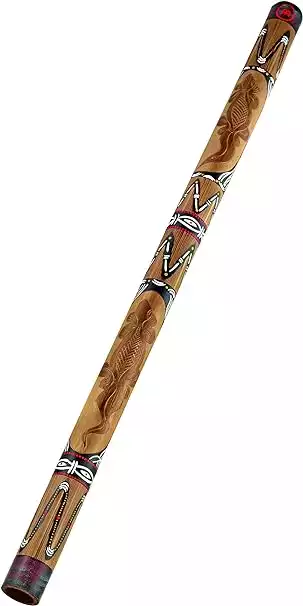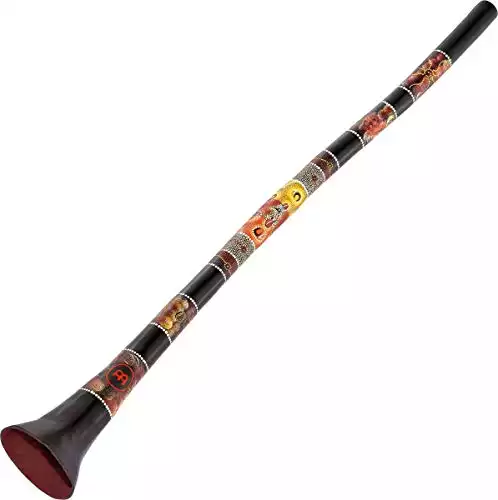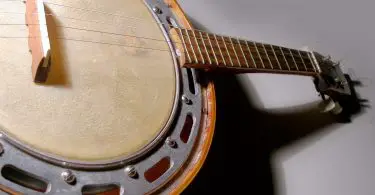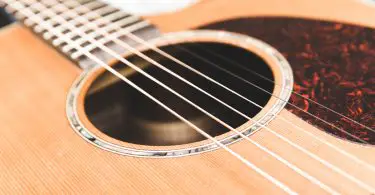Didgeridoos (pronounced di · jr · ee · doo) hail from the Australian Aboriginal peoples and have a respectable history stretching back for more than a millennium. These instruments utilize a long, shaped tube to create and manipulate air vibrations.
Didgeridoos still form a key part of Aboriginal music, ceremony, and culture, but over time, musicians worldwide have incorporated didgeridoo sounds into their work. Usage in recordings and live performances, information on the Internet, and the emergence of commercially manufactured didgeridoos have helped expose more musicians to this unique instrument during the modern era.
Gives musicians the most authentic experience in terms of its sound, feel, and quality, while at the same time remaining affordable for first-time players.
Even with their growing renown in the music scene, many musicians still only have a vague familiarity with didgeridoos, when they have heard of them at all. You need to be able to trust your sources when looking up information on didgeridoos, which is why we created a list that uses our own knowledge of didgeridoos and the expertise of several other individuals in the music industry.
We have some direct experience with this instrument, such as learning to play the didgeridoo from highly gifted performers, utilizing didgeridoos in jam session performances, and even including them on some recordings.
In addition to our own experience with didgeridoos, we reached out to instrument and music supply salespeople, musicians who regularly perform or practice with didgeridoos, music teachers who have helped people learn the didgeridoo, and our readers who gave us some outstanding information on specific didgeridoos they have played.
The valuable input from this diverse group of people let us work out a list of eight of the didgeridoos on the market today that have something to offer to new and experienced musicians. Then, we spent hours assessing these instruments according to ranking criteria. We considered the sound of the didgeridoos to be the most important.
We also considered the durability and quality of the construction, the influence the materials had on the instrument’s profile, the size and ability to transport the instrument easily, the cost of the didgeridoo, and the feel of the instrument while playing it. We think you’ll find our recommendations helpful and reliable.
-

$49.00$39.99Check on Amazon Check on Musician's FriendGives musicians the most authentic experience in terms of its sound, feel, and quality, while at the same time remaining affordable for first-time players.
03/09/2024 05:43 pm GMT -
-
 $47.99Check on Amazon
$47.99Check on AmazonA perfectly cylindrical shape may limit pitch options.
03/07/2024 08:15 pm GMT -
 $59.99Check on Amazon Check on Musician's Friend
$59.99Check on Amazon Check on Musician's FriendGreat to carry for public performances, construction felt more durable.
03/09/2024 07:39 pm GMT -
-
 $139.99Check on Amazon Check on Musician's Friend
$139.99Check on Amazon Check on Musician's FriendMore expressive resonance than other synthetic didgeridoos, creating a distinctive Australian drone note.
03/09/2024 09:07 pm GMT
How to Choose a Didge
If you have recently decided you want to pick up the didge (a didgeridoo), you will want to educate yourself on how to play this instrument, and have a music teacher, experienced friend, or book available to help you learn the ropes. Didgeridoos have several brands, materials, and designs to choose from, and therefore you want to be aware of the differences between them before making any type of purchase decision.
If you are a beginner, you will want to look for a didgeridoo that has a tone you like, that has a durable mouthpiece, and that is not likely to crack in your local climate. Many didgeridoos have recordings and videos available online so you can hear what they sound like, so listen to as many as you can and note which tones you like the most.
After that, you can try to find a didgeridoo with the sound you want that falls into your price range. More advanced players will want to consider whether they are going to be recording, touring, or playing concerts with their instrument, whether they desire a specific material, and whether they want different lengths and shapes of didgeridoos to have access to a more diverse range of sounds.
Our Recommendation: Meinl Percussion DDG1-BR
Gives musicians the most authentic experience in terms of its sound, feel, and quality, while at the same time remaining affordable for first-time players.
We decided that the Meinl Percussion DDG1-BR bamboo didgeridoo is the best didgeridoo out of all of the instruments we considered in this review, based on the criteria of sound, construction, and the feel when played. It is affordable even for a musician who wants to take a chance by picking up a new instrument.

Credit: Amazon.com
We found that the DDG1-BR didgeridoo had a full-bodied, deep tone that we were able to sustain for quite a while by controlling our breathing. This didgeridoo is 47 inches long, so it plays at a somewhat lower pitch than many of the shorter models available.
Although this particular model is sometimes pegged as a didgeridoo for beginners, we also heard from seasoned didgeridoo players that they were easily able to employ circular breathing to obtain droning, complex timbres that let them play the DDG1-BR for several minutes at a time.
One person we consulted, a music teacher, was able to produce impressive resonance through this instrument by blowing strongly as they played, which we liked. Out of the more affordable commercial didgeridoos that are available, this one definitely sounded the best.
The DDG1-BR is made of bamboo, instead of eucalyptus or a hardwood. Meinl Percussion’s choice to use bamboo was probably influenced by the desire to keep the price low while still using a natural material.
Even though the pitch and tone is somewhat different from the genuine eucalyptus didgeridoos that we have heard, the DDG1-BR still sounds more authentic to the traditional sound than instruments made out of fully synthetic materials. Of course, a didgeridoo collector or player looking for the “real thing” may prefer an instrument carved from teak instead.
While we did not encounter this ourselves, some readers also cautioned that the bamboo had the potential to split and create cracks down the length of the instrument.
These cracks formed more often when the didgeridoo was left in extreme temperatures or moved between places with large differences in air moisture. Occasionally, though, readers warned us that cracks had occurred during the course of normal play.
The feel of this didgeridoo also influenced our decision. The designs, evoking traditional Australian art, are interesting, but more importantly, we found the bamboo easy to grip, making the instrument easier for beginners to play as they learn to hold it properly.
Also, unlike some didgeridoos that require a separate mouthpiece, the DDG1-BR has a sanded mouthpiece that is part of the main body. Expert didgeridoo players have said that these types of mouthpieces do not always give them the level of control over the instrument’s sound that they want.
We thought that mouthpiece felt comfortable while playing, though, even after practicing for almost an hour. One problem that at least some readers encountered were that the mouthpiece’s smell bothered them after playing. We did not directly experience this, but thought we should include that caveat in our review.
Runner Up: World Percussion USA’s Fire Etched Modern Didgeridoo
Beeswax mouthpiece lessens risk of losing the seal.
While this one is slightly pricier than our main recommendation, it still falls in the range of reasonably priced didgeridoos. We noticed both good points and drawbacks when evaluating the Fire Etched Modern Didgeridoo.
The Fire Etched Modern Didgeridoo allows for booming, rich sounds, but at the same time, they did not always sound as complex as the pitches achieved with the DDG1-BR. Musicians and music suppliers familiar with eucalyptus didgeridoos added that they could distinguish the Fire Etched Modern Didgeridoo’s pitch from wooden didgeridoos.

Credit: Amazon.com
If you already have plenty of practice with a didgeridoo and want an instrument that can provide a highly specific pitch, the Fire Etched Modern Didgeridoo may not be for you. Beginners may find the sound rich enough to keep them playing, though.
The Fire Etched Modern Didgeridoo is hand-crafted, but the main body is a proprietary synthetic plastic. It also has a beeswax mouthpiece, which allows you to play without as much of a risk of losing the seal formed by the mouth and mouthpiece. This could be a benefit for beginning didgeridoo players and music students.
The synthetic body also makes this instrument unlikely to crack, which you might appreciate if you will be bringing your didgeridoo to many different places. The tradeoff that some readers report is that, because the plastic is not as thick as a wooden didgeridoo would be, forcing air through the instrument can be a challenge for the novice player.
Even with less risk of splitting, at least one musician said that the curvature and material could place beginners in danger of accidentally bending the Fire Etched Modern Didgeridoo and changing its sound in undesirable ways.
Other Didgeridoos to Consider:
Toca DIDG-PG Bamboo Didgeridoo
A perfectly cylindrical shape may limit pitch options.
Toca’s DIDG-PG provides musicians with another lightweight bamboo didgeridoo. The DIDG-PG is 47 inches long, so it is capable of creating a low, steady, and mellow tone. Toca hand-produces this particular model, so there are slight kinks in the design instead of the didgeridoo having a perfectly cylindrical shape.

Credit: Toca Percussion
However, the shape does not detract from the way this didgeridoo sounds. Instead, it provides some possibilities for resonance and complex timbre that precisely machine-crafted cylinders would not. Aesthetically, we found the shape and artwork on the DIDG-PG pleasing too.
This instrument seemed to be somewhat thinner than other bamboo didgeridoos, which might have been why the tone did not seem quite as low as the DDG1-BR, our top recommendation.
The DIDG-PG has a potential for cracking and splits that can occur with bamboo instruments, which could turn some people off from this didgeridoo. However, we cannot say for sure if this risk is higher for the DIDG-PG compared to other products.
We think the DIDG-PG would probably work best for musicians who live in a temperate climate that is not too arid, and who will not be taking their didgeridoo with them if they travel or tour.
Toca DIDG-CTS Curved Didgeridoo
Great to carry for public performances, construction felt more durable.
The DIDG-CTS Curved Didgeridoo is the next offering by Toca that we considered. This didgeridoo has a few unique features, even for an instrument that is already highly novel.
Although this didgeridoo is a longer one, at 50 inches, it has higher and brighter tone than a few of the shorter didgeridoos we examined. The reasons for the unexpectedly bright tone include the curvature of the DIDG-CTS, as it contains more extensive and broader curves than the DIDG-PG.

Credit: Toca Percussion
Also, this didgeridoo has a slight flare at one end, which increases the pitch of the instrument in general. While the tone for this instrument was somewhat intricate, which we liked, we felt that the timbre was not the most engaging or complex, as there seemed to be fewer possibilities to make use of resonance. The shape of this instrument may play a role in this limitation. The synthetic PVC material used in this didgeridoo’s construction, which is intentionally thin, might also influence the sound.
We did like that this was among the lightest didgeridoos we considered. The weight seems like it would make this didgeridoo great to carry for public performances, and the construction felt a bit more durable than some of the other synthetic didgeridoos on the market.
MEINL Percussion Trombone Didgeridoo
The Trombone Didgeridoo, produced by MEINL Percussion, stood out because it represents a modification to the conventional didgeridoo design. This instrument costs 
The gimmick with the Trombone Didgeridoo is that it contains two pieces that interlock, rather than being a single tube. A musician can slide the main tube section out at varying lengths from the mouthpiece, basically in the same way that you would use the slide of a trombone.
We liked the innovative sound of the Trombone Didgeridoo, because it still contained some of the low-pitched noises that carry well across a practice space, but also permitted the didgeridoo to play like a tonal instrument.
The thin walls of the synthetic material, the fluted end, and the need to allow for multiple notes to be played, though, means that the Trombone Didgeridoo has to be extended beyond 5 feet in order to get the same C note that the Meinl Percussion DDG1-BR can play.
You would definitely need more room to play the Trombone Didgeridoo comfortably. Because it is not a standard didgeridoo, this product is also not necessarily accessible for beginners, even if they know how to play the trombone. It might work best for musicians who already know how to play a didgeridoo, but want a tonal instrument they can add to the comfortable drone sounds of their traditional instrument.
MEINL Pro Fiberglass Didgeridoo
More expressive resonance than other synthetic didgeridoos, creating a distinctive Australian drone note.
The Meinl Pro Fiberglass Didgeridoo, although it is made from synthetic materials, stands out because its appeal is not based on portability or convenience. This instrument costs departs from the PVC often used didgeridoos made from synthetic materials. Instead, it is constructed of fiberglass, and the higher cost reflects the manufacturer’s intent for the instrument to last a lifetime.
We liked that the Fiberglass Didgeridoo had a rich intonation that was able to deliver more expressive resonance than some of the other synthetic didgeridoos that we reviewed. It contains a curved body with a fluted end, and this increases the pitch that the instrument is optimized for. The Fiberglass Didgeridoo is 57 inches but plays at a higher pitch than the DDG1-BR.
For musicians who already consider themselves well-practiced in playing didgeridoos, and who already have instruments that can deliver lower tones, they might find that the Fiberglass Didgeridoo would make a great addition to their collection, expanding the possibilities for sounds they can create.
We think this model would be useful, for example, to include in a recording studio to layer over a didgeridoo that plays at a lower pitch. The higher cost and the departures that this instrument takes from more conventional didgeridoos, however, indicate that the Meinl Pro Fiberglass Didgeridoo may have less to offer to the novice player or music student.
As a recap, here’s the full list of the best didgeridoos:
Gives musicians the most authentic experience in terms of its sound, feel, and quality, while at the same time remaining affordable for first-time players.
Beeswax mouthpiece lessens risk of losing the seal.
A perfectly cylindrical shape may limit pitch options.
Great to carry for public performances, construction felt more durable.
More expressive resonance than other synthetic didgeridoos, creating a distinctive Australian drone note.
How To Learn the Didgeridoo (For Beginners)
As a beginner, here are several tips to learn how to play the didgeridoo:
- Start with working on the base and make sure that your lips are creating the notes, so they need to be solid. Practice making your lips into two elastic bands that you can make tighter or less tight from the sides of your lips.
- To make a sound, your lips need to flap, and they need to do so at the right speed with the least amount of air flow. You can practice this without a didgeridoo by going from a slow “brrr” sound to a faster “brrr” sound, finding the right speed and tension for the perfect note.
- When you start playing with the didgeridoo, play right in front in the middle, and avoid playing from the sides. This will help you develop better technique and mobility with your tongue, jaw, and cheeks.
- Practice your lip speed and tension by playing a note and finding the right vibration and tension. You can also practice inside and outside to develop your playing in different environments.
- Remember to take it slow and steady, and don’t be afraid to make funny faces or experiment with different techniques. With practice and patience, you can become an amazing didgeridoo player.
The first step is to find the drone sound, which is a consistent sound that the instrument produces.
The next step is to get the shape of the lips correct, which is called an embouchure. To create the sound, one should buzz their lips together with the appropriate tightness of the lips.
Avoid puffing out the cheeks while playing.
If you’re having trouble, try making a proper seal with the mouthpiece, finding the most comfortable position for the lips, and experimenting with the angle of the didgeridoo. It may take some practice to get the hang of playing the didgeridoo.
To warm up, try some basic breathing techniques / exercises to get the respiratory system going. Follow that by open-throated breathing and lip buzzing to help loosen up the lips, which are the main interface with the instrument. Then, you learn how to play long tones by adjusting the tightness and looseness of your lips for different pitches, and add vowel shapes with your tongue to produce higher frequencies and overtones. If you feel light-hearted during practice, make sure to take breaks and do some deep breathing exercises.
Prerequisites for Using Didgeridoos
Even though the popularity of didgeridoos has quickly grown over the last three decades, many people are still not very familiar with them. This is true even of musicians, who might recognize the word, but could not say for certain what a didgeridoo sounds like.
We decided, then, that the first prerequisite for playing a didgeridoo is simply to know a bit about what this instrument is, and how it works. Megan Romer’s article on About gives an excellent overview of these basics, so we will just give you enough information to provide a context for how we selected the best didgeridoo.
The didgeridoo is a long, hollow tube, conventionally formed from eucalyptus trees hollowed out by pests. Manufacturers have experimented with synthetic and natural materials to make these instruments, from plastics and glass to clay and plant fibers. These materials can change the tone, though.
Not all manufacturers have ready access to eucalyptus or other Australian hardwood trees, so commercial didgeridoos may be made from other hardwoods, bamboo, and blends of synthetic materials. Wooden, beeswax, or rubber mouthpieces are placed on the end where the musician blows.
Even though they are traditionally fashioned from wood, didgeridoos meet the technical definition of a brass instrument. As the Wikipedia entry on didgeridoos explains, didgeridoos conduct vibrations from a musician’s lips to the air they blow into the tube. Because these vibrations do not pass through a reed, as they would in a saxophone or an oboe, the didgeridoo cannot really be called a woodwind instrument.
Didgeridoos may vary in their length. The shorter types reach to about 3 feet, and the longest extend to a whopping 10 feet. You don’t need to worry about the logistics of playing an instrument taller than you are, though. Commercially available didgeridoos have average lengths of just 4 to 5 feet. Blowing through a long didgeridoo plays a note with a pitch lower than that of a shorter didgeridoo with the same shape.
Manufacturers and craftspeople may shape didgeridoos to be relatively cylindrical, or they may extend the instrument at one end, so that it is a cone. The shape also contributes to this instrument’s pitch. If you have two didgeridoos of equal length, where one is cylindrical and one is a cone, blowing through the cylindrical didgeridoo causes a lower pitch to sound, compared to the conical didgeridoo.
Playing the didgeridoo can be deceptively complex. These instruments might appear somewhat limited in their sounds, because they lack the valves many brass instruments have to control individual notes.
However, didgeridoo players vary notes by exhaling to create air pressure capable of vibrating the instrument and generating harmonics and using their throat and tongue to add additional resonance or change the pitch. Highly skilled indigenous didgeridoo players even emulate local animal noises through using their own vocal cords and lips.
What Are the Benefits of Didgeridoos?
Ask any musician who has a favorite instrument, and they will tell you the main benefit of owning that instrument is being able to play it anytime you want. We think that this viewpoint fits the didgeridoo perfectly. Didgeridoos deliver a unique playing experience, even for musicians who are very familiar with brass and woodwind instruments.
An informational TedTALKS video featuring Joe Schultz, hosted on Youtube, provides some insight into how the didgeridoo achieves its trademark sound, and allows you to hear the didgeridoo in action if you have not been fortunate enough to hear one played before. A didgeridoo can offer many other benefits for music students, hobbyists, and even professional musicians, too.
No other woodwind instrument can offer the same low-pitched tone as a didgeridoo. When playing a didgeridoo, musicians have said that you often feel the sound waves just as much as you hear them. Likewise, the wooden construction means that the didgeridoo’s pitches and timbres are distinct from its relatives in the brass instrument family.
Because didgeridoos developed in a non-Western musical culture, the harmonies, use of resonance, and timbres do not resemble any Western counterparts. Didgeridoos can, therefore, add sonic elements to compositions that deliver whole new levels of depth and power.
These instruments also offer ways for musicians mostly trained in Western musical theory and composition to explore how different approaches to music can sound and function. Both professional musicians and music students can benefit from expanding their horizons in this way.
At least two studies report that some people who pick up the didgeridoo might experience respiratory health benefits. A 2010 article by Eley and Gorman found that young Aboriginal Australians who practiced playing the didgeridoo for six months on a daily basis experienced fewer asthma symptoms than youth who did not play the instrument.
Another investigation by Puhan et al., published a few years earlier, studied people with sleep apnea who took part in weekly didgeridoo lessons and daily home practice. In that study, the people who played the didgeridoo acquired improved airway stability, snored less, and slept better compared to before they started using the instruments. Even if you are fortunate enough not to have asthma or sleep apnea, respiratory health is still important for people of all ages.












Start the discussion at talk.hearthemusicplay.com